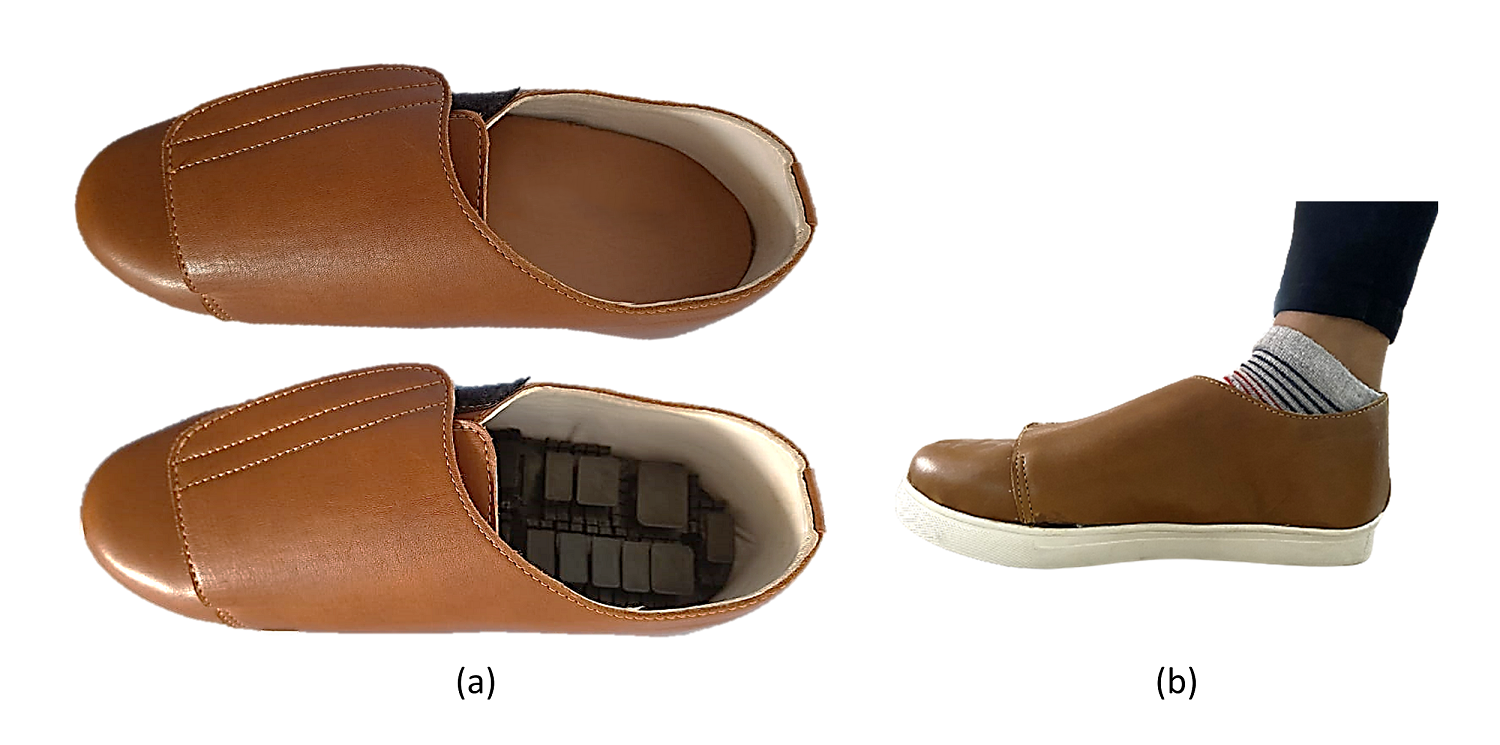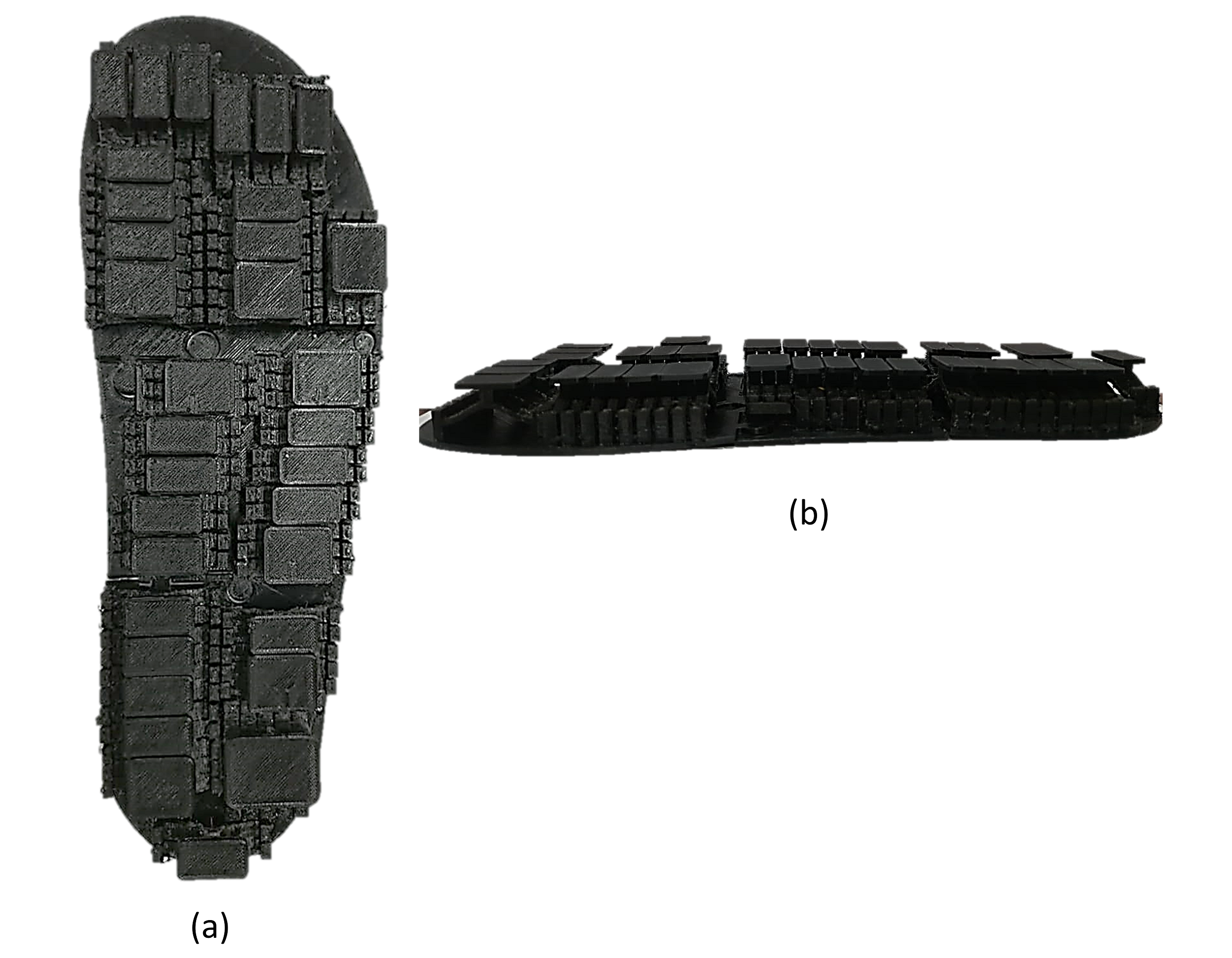Researchers in the Department of Mechanical Engineering, Indian Institute of Science (IISc), in collaboration with the Karnataka Institute of Endocrinology and Research (KIER), have developed a set of unique self-regulating footwear for persons with diabetes.
Foot injuries or wounds in persons with diabetes heal at a slower rate than in healthy individuals, which increases the chance of infection, and may lead to complications that require amputation in extreme cases.
The footwear – a pair of specially-designed sandals – developed by the IISc-led team is 3D printed and can be customised to an individual’s foot dimensions and walking style. Unlike conventional therapeutic footwear, a snapping mechanism in these sandals keeps the feet well-balanced, enabling faster healing of the injured region and preventing injuries from arising in other areas of the feet.

Footwear with self-offloading insole underneath the top sole (b) one of the volunteers wearing the self-offloading footwear (Credit: Priyabrata Maharana, Jyoti Sonawane)
The footwear can be especially beneficial for people who have diabetic peripheral neuropathy – those who suffer from nerve damage caused by diabetes, leading to a loss of sensation in the foot. “Diabetic peripheral neuropathy is one of the long-term complications of diabetes, and its diagnosis is mostly neglected,” says Pavan Belehalli, Head of the Department of Podiatry at KIER, and one of the authors of the study published in Wearable Technologies. This loss of sensation leads to irregular walking patterns in persons with diabetes, he says.
For example, a healthy person usually places their heel first on the ground, followed by the foot and toes, and then the heel again – this ‘gait cycle’ distributes the pressure evenly across the foot. But due to the loss of sensation, persons with diabetes may not always follow this sequence, which means that the pressure is unevenly distributed. Regions of the foot where the pressure exerted is high are at greater risk of developing ulcers, corns, calluses and other complications.
Most of the therapeutic footwear available in the market is ineffective at off-loading the uneven pressure exerted by the ‘abnormal’ gait cycle of persons with diabetes, the researchers say. To address this challenge, they designed arches in their sandals that ‘snap’ to an inverted shape when a pressure beyond a certain threshold is applied. “When we remove the pressure, [the arch] will automatically come back to its initial position – this is what is called self-offloading,” explains first author Priyabrata Maharana, PhD student in the Department of Mechanical Engineering, IISc. “We consider the individual’s weight, foot size, walking speed and pressure distribution to arrive at the maximum force that has to be off-loaded.” Multiple arches have been designed along the length of the footwear to off-load the pressure effectively.

3D-printed prototype of self-offloading insole showing the arrangement of array of arches ((a) top view and (b) side view) to offload the high-pressure areas (Credit: Priyabrata Maharana, Jyoti Sonawane)
“This is a mechanical solution to a problem,” explains GK Ananthasuresh, Professor in the Department of Mechanical Engineering, IISc, and senior author of the study. “Most of the time, people use electromechanical solutions.” Such solutions involve using sensors and actuators that can rack up the price of the footwear and make them very expensive, he adds.
The team is collaborating with start-ups Foot Secure and Yostra Labs to commercialise their product. “There are a lot of commercial shoe manufacturers selling costly footwear in the name of giving comfort using what they call memory foam, but we have tested them, and they don’t have the required characteristics,” says Ananthasuresh. “This footwear can be used not only by people suffering from diabetic neuropathy, but by others as well.”
Maharana P, Sonawane J, Belehalli P, Ananthasuresh GK, Self-offloading therapeutic footwear using compliant snap-through arches, Wearable Technologies (2022).
https://www.cambridge.org/core/journals/wearable-technologies/article/selfoffloading-therapeutic-footwear-using-compliant-snapthrough-arches/4217BA71EBBD52A973160415F5F614C3
CONTACT:
G K Ananthasuresh
Professor
Department of Mechanical Engineering
Indian Institute of Science (IISc)
Email: suresh@iisc.ac.in
Telephone: +91 (80) 2293 2334
Pavan Belehalli
Head of Department
Department of Podiatry
Karnataka Institute of Endocrinology and Research (KIER)
Email: docbelehalli@gmail.com
Priyabrata Maharana
PhD student
Department of Mechanical Engineering
Indian Institute of Science
Email:<priyabratam@iisc.ac.in
NOTE TO JOURNALISTS:
a) If any of the text in this release is reproduced verbatim, please credit the IISc press release.
b) For any queries about IISc press releases, please write to news@iisc.ac.in or pro@iisc.ac.in.



